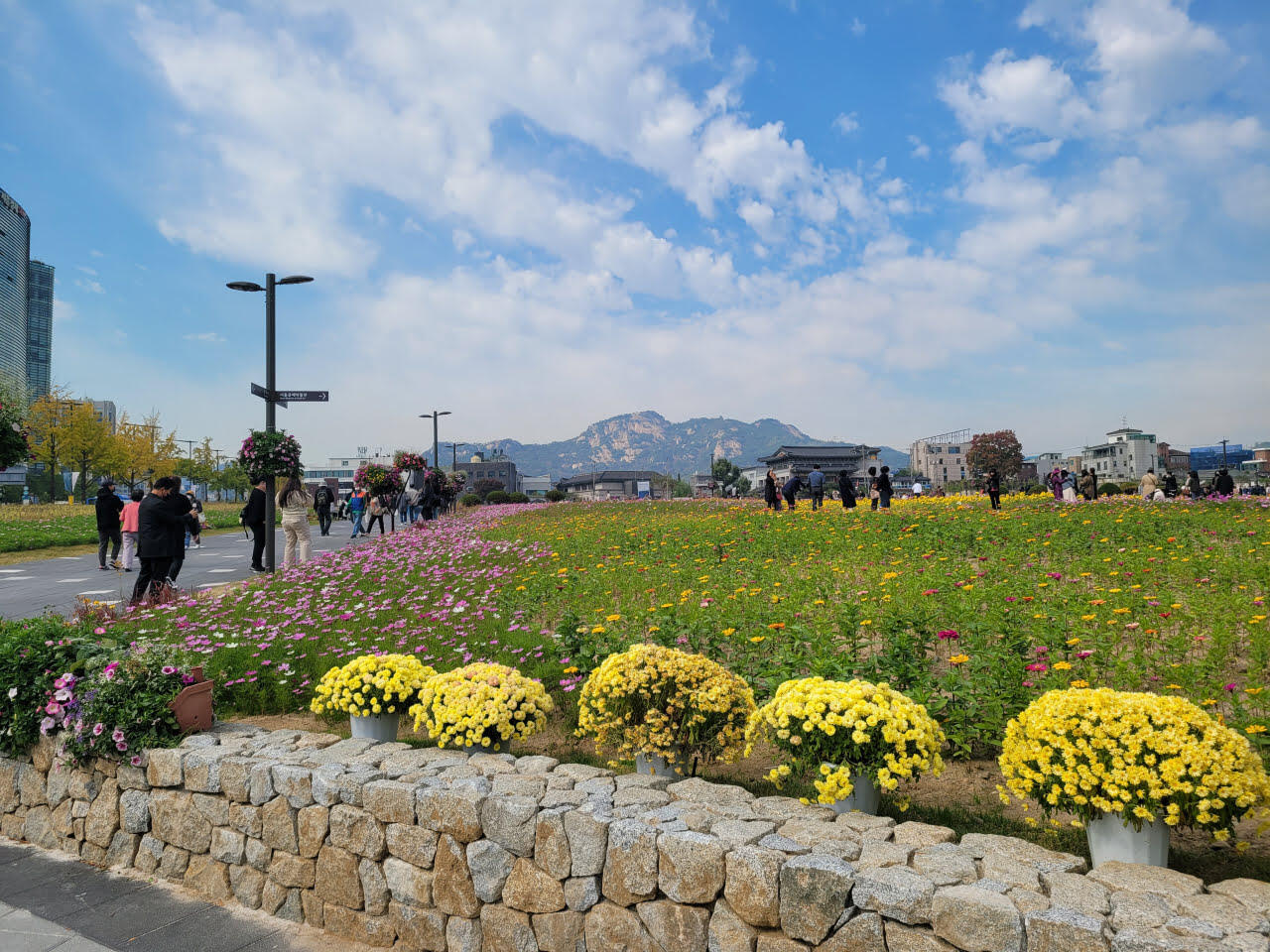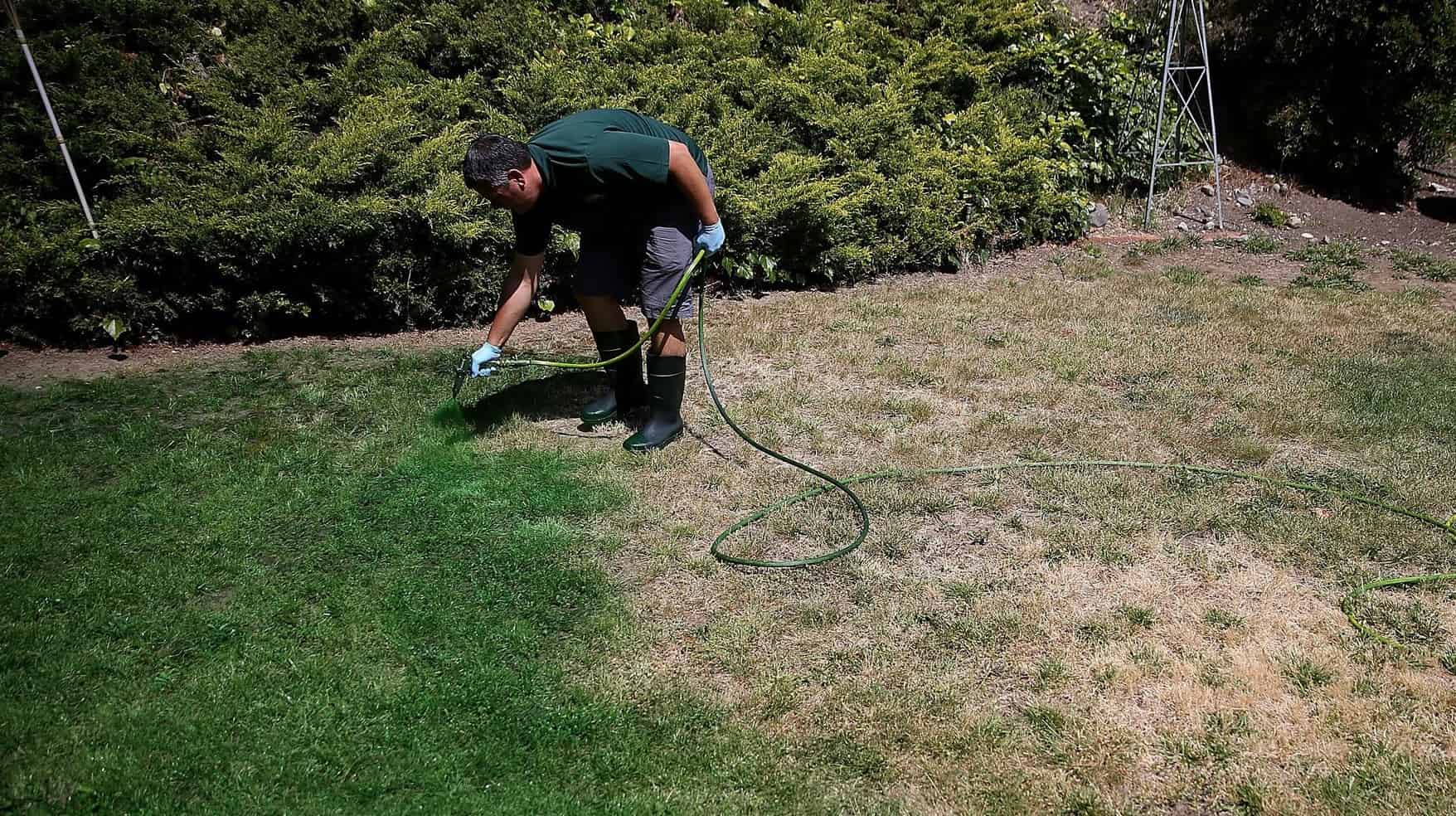Home>Garden Essentials>How Can You Make Land An Official Green Space


Garden Essentials
How Can You Make Land An Official Green Space
Modified: March 7, 2024
Discover how to turn your land into an official green space with our expert tips and guidance. Transform your garden into a sustainable haven for nature and enjoy the benefits of a healthier environment.
(Many of the links in this article redirect to a specific reviewed product. Your purchase of these products through affiliate links helps to generate commission for Storables.com, at no extra cost. Learn more)
Introduction
Welcome to the world of green spaces! In today’s rapidly urbanizing world, the need for green spaces has become more crucial than ever. Green spaces, also known as open spaces or public parks, play a vital role in our physical and mental well-being, as well as in preserving the environment. These areas provide a sanctuary amidst the concrete jungle, where people can connect with nature and find solace.
In this article, we will explore the process of making land an official green space. We will delve into the importance of green spaces, discuss how to identify suitable land for such spaces, and uncover the steps involved in the official designation of these areas. Furthermore, we will explore the community engagement aspect, securing funding for green space projects, and the implementation and maintenance of these valuable spaces.
So, whether you are an urban planner, a community activist, or simply an individual passionate about green spaces, this article will equip you with the knowledge to transform land into an official green space and contribute to the creation of a greener, healthier, and more sustainable environment.
Key Takeaways:
- Green spaces offer physical and mental health benefits, promote community connections, and contribute to environmental conservation. They are essential for creating vibrant and sustainable communities.
- Engaging the community, securing funding, and implementing sustainable practices are crucial for developing and maintaining official green spaces. Everyone can contribute to creating a greener, healthier environment.
Read more: What Can You Make With A Dehydrator
Understanding the Importance of Green Spaces
Green spaces are not just patches of grass or landscaped gardens; they have a profound impact on our physical, mental, and emotional well-being. Research has consistently shown that access to green spaces is associated with numerous health benefits.
First and foremost, green spaces offer opportunities for physical activity. They provide a space for individuals to engage in various recreational activities like jogging, cycling, or playing sports. The availability of these activities encourages an active lifestyle, which is essential for cardiovascular health and weight management.
Moreover, spending time in green spaces can have a positive impact on mental health. Nature has a calming effect on the mind, reducing stress levels and promoting relaxation. Immersion in nature has been linked to improved mood, reduced anxiety, and enhanced cognitive function. Simply taking a walk in a park or sitting under a tree can do wonders for your mental well-being.
Green spaces also contribute to the overall quality of life in communities. They serve as gathering places where people can socialize, bond with friends and family, and engage in community events. These spaces promote a sense of belonging and strengthen social connections, which are fundamental for building cohesive and resilient communities.
Beyond individual well-being, green spaces play a critical role in environmental conservation. They act as natural habitats for a diverse range of plant and animal species, contributing to biodiversity. Furthermore, they help mitigate the negative effects of urbanization by reducing air pollution, absorbing carbon dioxide, and regulating temperature.
The benefits of green spaces extend beyond humans and ecosystems. They also have economic implications. Research has shown that properties located near green spaces have higher values, attracting businesses and fostering economic growth. Additionally, green spaces can enhance tourism and create job opportunities related to their management and maintenance.
Now that we understand the importance of green spaces, let’s explore how to identify suitable land for creating these valuable areas.
Identifying Suitable Land for Green Spaces
Identifying suitable land for green spaces requires careful consideration of several factors to ensure their effectiveness and long-term viability. Here are some key considerations when selecting land for creating green spaces:
- Accessibility: The land should be easily accessible to the surrounding community. It should be located in close proximity to residential areas, schools, and other public facilities. Accessible green spaces encourage people to use and enjoy them on a regular basis.
- Size: The size of the land matters, as it determines the types of activities and amenities that can be accommodated. Ideally, the size should be large enough to accommodate a range of recreational facilities, walking trails, and open green areas for relaxation.
- Connectivity: Green spaces should be integrated into the existing network of parks and open spaces. They should be interconnected with walking and cycling paths, allowing easy access to other nearby parks and recreational areas.
- Topography: The land’s topography plays a role in its suitability for green spaces. A desirable land should have a mix of flat areas for active recreation and sloped areas for passive recreation. Variation in topography adds visual interest and provides opportunities for diverse activities.
- Natural Features: Land with existing natural features, such as trees, bodies of water, or wetlands, is highly desirable. These features provide environmental benefits, aesthetic appeal, and opportunities for wildlife habitat. Preserving these natural elements is crucial for the ecological integrity of the green space.
- Environmental Considerations: Conducting an environmental assessment of the land is essential. Factors such as soil quality, drainage, and proximity to sensitive ecological areas should be evaluated to ensure the long-term sustainability of the green space and minimize any negative environmental impacts.
- Community Input: Engage the community in the selection process. Seek input from local residents, community organizations, and relevant stakeholders to understand their needs and preferences. This collaborative approach ensures that the green space meets the unique requirements of the community it serves.
By considering these factors when identifying suitable land, you can ensure that the green spaces created will meet the needs and aspirations of the community while preserving and enhancing the natural environment. Now that we have found the ideal land, let’s explore the process of making it an official green space.
The Process of Making Land an Official Green Space
Making land an official green space involves a series of steps and collaboration between various stakeholders. Here is a step-by-step process to guide you:
- Identification and Proposal: Once suitable land has been identified, a formal proposal must be developed. This proposal should outline the vision, objectives, and potential benefits of the green space. It should also include details such as the size and location of the land, proposed amenities, and any environmental considerations.
- Engage with Local Authorities: Reach out to local authorities, such as the municipal council or the parks and recreation department, to present the proposal. Seek their support and guidance throughout the process. They will provide valuable insights into the legal requirements and regulations pertaining to land designation.
- Conduct Feasibility Study: A feasibility study should be conducted to assess the practicality and sustainability of the green space. This study can include an analysis of the land’s infrastructure needs, estimated costs, and potential sources of funding. It should also consider the long-term maintenance requirements of the green space.
- Community Engagement: Engage with the local community to ensure their input and participation in the development of the green space. Conduct public meetings, surveys, and workshops to gather feedback and ideas. Incorporate the community’s suggestions into the final plan, fostering a sense of ownership and pride among the residents.
- Obtain Legal Designation: Work with local authorities to obtain the necessary legal designation for the land as a green space. This may involve rezoning the land, amending existing bylaws, or establishing new regulations specific to the green space. Consult legal experts to ensure compliance with all legal requirements.
- Design and Planning: Collaborate with architects, landscape designers, and other professionals to develop a detailed design plan for the green space. Consider aspects such as landscaping, amenities, pathways, seating areas, and sustainability features. The design should cater to the needs and preferences of the community, promoting inclusivity and accessibility.
- Funding Acquisition: Explore various funding sources to secure the necessary financial resources for the development and maintenance of the green space. This can include government grants, corporate sponsorships, community fundraising initiatives, and partnerships with local businesses or organizations. Create a comprehensive funding plan to ensure the long-term sustainability of the green space.
- Construction and Implementation: Begin the construction process, adhering to the approved design plan. This can involve site preparation, landscaping activities, installation of amenities, and the creation of pathways and recreational facilities. Regular monitoring and collaboration with contractors and builders are vital to ensure the proper execution of the project.
- Maintenance and Management: Establish a maintenance and management plan for the green space to ensure its longevity and functionality. This includes regular upkeep of landscaping, cleaning, waste management, and periodic inspections. Engage community members and volunteers in ongoing maintenance activities to foster a sense of stewardship and pride in the green space.
By following these steps and working closely with local authorities and the community, you can successfully transform land into an official green space. The next crucial aspect is engaging the community in the development and maintenance of green spaces, which we will explore further.
Engaging the Community in Green Space Development
Engaging the community is a critical component of successful green space development. When community members are actively involved in the planning and maintenance of green spaces, it enhances their sense of ownership, fosters a stronger connection with the space, and promotes its long-term sustainability. Here are some strategies for effectively engaging the community in green space development:
- Community Meetings and Workshops: Organize regular community meetings and workshops to gather input, ideas, and feedback from residents. These meetings can serve as platforms for open discussions, where community members can voice their opinions, concerns, and aspirations for the green space. Actively listen to the community and incorporate their suggestions into the planning process.
- Online Surveys and Social Media: Utilize online surveys and social media platforms to reach a wider audience and gather input from individuals who may not be able to attend physical meetings. Create online polls, questionnaires, and interactive platforms to gather feedback on various aspects of green space development, such as design preferences, desired amenities, and programming ideas. Engage with community members through social media by sharing updates, seeking input, and encouraging discussions.
- Establish Community Advisory Committees: Form community advisory committees comprising diverse stakeholders, including residents, local organizations, schools, and other relevant groups. These committees can provide valuable insights, expertise, and support throughout the green space development process. Regularly engage with the committee members, involve them in decision-making, and ensure their representation in community events and activities.
- Educational Programs and Workshops: Offer educational programs and workshops that promote environmental awareness, sustainable practices, and the benefits of green spaces. These initiatives can include nature walks, gardening workshops, educational sessions on conservation, and eco-friendly practices. By educating the community on the importance of green spaces, you foster a deeper appreciation and understanding of their value.
- Volunteer Opportunities: Provide opportunities for community members to actively participate in the maintenance and management of the green space. Organize volunteer days where individuals can contribute their time and energy in activities like planting trees, cleaning litter, and maintaining landscaped areas. These experiences create a sense of ownership and pride among community members while fostering a stronger connection to the green space.
- Cultural and Recreational Events: Organize cultural and recreational events within the green space to bring the community together. These events can include outdoor concerts, movie nights, art exhibitions, and festivals. By incorporating community-led activities and showcasing local talent, you create a vibrant and inclusive space that reflects the diverse interests and needs of the community.
- Regular Communication and Updates: Maintain open lines of communication with the community throughout the development and maintenance phases of the green space. Provide regular updates on the progress of the project, share success stories, and seek input on ongoing initiatives. Transparency and regular communication build trust and a sense of shared responsibility for the green space.
By actively engaging the community in green space development, you create a collaborative and inclusive environment that reflects the needs and aspirations of local residents. The next step is securing funding for green space projects, which we will explore further.
To make land an official green space, research local government programs or organizations that support green initiatives. Contact them to understand the process and requirements for designating land as a green space.
Read more: How Long Can You Keep Furniture In Storage
Securing Funding for Green Space Projects
Securing funding is a crucial aspect of green space projects as it ensures their successful implementation, maintenance, and long-term sustainability. Here are some strategies to help you secure funding for your green space project:
- Grants and Government Funding: Research and explore grants and funding opportunities available through government agencies, foundations, and organizations dedicated to conservation, public spaces, and community development. Government programs often provide financial support for green space initiatives that align with their objectives and priorities.
- Corporate Sponsorship: Build partnerships with local businesses and corporations that have an interest in supporting green initiatives or community development. Approach them with a compelling proposal outlining the benefits of partnering with your project, such as increased visibility, positive public relations, and the opportunity to contribute to a greener and healthier community.
- Crowdfunding: Utilize crowdfunding platforms to engage the community and raise funds for the green space project. Create a compelling campaign highlighting the project’s objectives, benefits, and the impact it will have on the community. Encourage community members and supporters to contribute and share the campaign through their social networks.
- Community Fundraising: Organize community fundraising events and initiatives to raise funds for the green space project. These can include charity runs, bake sales, art auctions, or concerts. Engage local businesses, community groups, and schools to actively participate and contribute to the fundraising efforts.
- Public-Private Partnerships: Form partnerships with private entities that have a vested interest in green space development. Consider collaboration opportunities with real estate developers, businesses, or local institutions. These partnerships can provide financial resources, expertise, and ongoing support for the project.
- Donations and Philanthropy: Reach out to individuals or organizations passionate about environmental causes and community well-being. Develop relationships with philanthropists, local foundations, or charitable organizations that may be interested in supporting green space projects. Customize your approach according to their specific interests and motivations.
- In-Kind Contributions: Seek in-kind contributions from businesses and organizations that can provide materials, equipment, or services needed for the project. This can help alleviate some of the financial burden and ensure that resources are allocated efficiently.
- Participatory Budgeting: Advocate for the inclusion of green space projects in local government participatory budgeting processes. These processes allow residents to vote and allocate a portion of the local budget towards community projects. Engage the community and encourage them to vote for the green space project, highlighting its benefits for the entire community.
When securing funding, it is important to articulate the social, environmental, and economic benefits of the green space project. Emphasize how the project will improve the quality of life for residents, promote sustainability, and contribute to community well-being. Develop a comprehensive funding plan that shows the estimated costs, identifies potential funding sources, and outlines a sustainable financial strategy for the project’s maintenance and long-term viability.
With a well-planned funding strategy and a strong community engagement approach, you can successfully secure the necessary financial resources to bring your green space project to life. Now, let’s explore the implementation and maintenance of green spaces.
Implementing and Maintaining Green Spaces
Implementing and maintaining green spaces involve a range of activities and considerations to ensure their functionality, attractiveness, and sustainability. Here are some key steps to guide you:
- Construction and Installation: Start by implementing the design plan for the green space, which may include activities such as landscaping, installing amenities, constructing pathways, and setting up recreational facilities. Collaborate closely with contractors and builders to ensure adherence to the approved design and construction standards.
- Planting and Landscaping: Plant trees, flowers, and other vegetation according to the landscape design. Consider native plant species that are well-suited to the local climate and require minimal maintenance. Regularly water, fertilize, and prune the plants to ensure their healthy growth.
- Infrastructure and Amenities: Install appropriate amenities such as seating areas, picnic tables, playgrounds, signage, and public art. Ensure that these amenities are accessible and well-maintained, promoting inclusivity and providing a positive experience for all visitors.
- Recycling and Waste Management: Implement an effective recycling and waste management system within the green space. Install recycling bins and garbage receptacles at strategic locations and ensure regular emptying and proper disposal of waste. Encourage park visitors to practice responsible waste management through educational signage and awareness campaigns.
- Regular Maintenance: Develop a comprehensive maintenance plan for the green space that includes regular cleaning, landscape upkeep, and repairs. Assign responsibilities to a dedicated maintenance team or work with community volunteers to ensure tasks are performed consistently and efficiently. Regularly assess the condition of amenities, pathways, irrigation systems, and lighting to address any issues promptly.
- Community Involvement: Encourage community involvement in the maintenance and monitoring of the green space. Organize volunteer events, such as clean-up days or gardening workshops, to engage community members in the ongoing care of the space. Foster a sense of pride and ownership among the community by involving them in decision-making processes and soliciting their feedback on the maintenance practices.
- Programming and Events: Organize regular programming and events within the green space to attract visitors and activate the space. This can include fitness classes, nature walks, art exhibitions, cultural events, and community celebrations. Collaborate with local organizations and community groups to provide a diverse range of activities that cater to the interests and needs of the community.
- Sustainability Practices: Implement sustainable practices within the green space to minimize environmental impact and conserve resources. Install solar-powered lighting, use drought-tolerant landscaping, and implement water-saving measures such as rainwater harvesting and efficient irrigation systems. Promote environmental education to park visitors and encourage them to adopt sustainable behaviors.
- Regular Evaluation and Improvement: Continuously evaluate the usage patterns, visitor feedback, and the overall effectiveness of the green space. Regularly assess the implementation and maintenance strategies to identify areas for improvement. Adapt and evolve the green space to meet the changing needs and expectations of the community.
By implementing a well-designed maintenance plan, actively involving the community, and integrating sustainable practices, you can ensure that the green space remains vibrant, functional, and cherished by the community for years to come. The benefits and impact of official green spaces will be discussed next.
Benefits and Impact of Official Green Spaces
Official green spaces offer numerous benefits and have a significant impact on individuals, communities, and the environment. Let’s explore some of the key benefits and the positive impact these green spaces provide:
- Physical and Mental Health: Green spaces promote physical activity, allowing individuals to engage in various recreational activities such as walking, jogging, and sports. Regular physical activity improves cardiovascular health, helps maintain a healthy weight, and reduces the risk of chronic diseases. These spaces also have a positive impact on mental health by reducing stress levels, improving mood, and fostering relaxation.
- Community Cohesion and Social Interaction: Official green spaces serve as gathering places where people from diverse backgrounds can come together. They foster a sense of community, providing opportunities for social interaction, connections, and the creation of shared memories. Green spaces also host community events and celebrations, strengthening social bonds and enhancing the overall quality of life.
- Environmental Benefits: These spaces play a vital role in environmental conservation. They support biodiversity by providing habitats for a variety of plant, insect, and animal species. Green spaces also contribute to improved air quality by absorbing carbon dioxide and other pollutants. Additionally, they help mitigate the urban heat island effect by providing shade and reducing temperatures in urban areas.
- Economic Implications: Official green spaces have positive economic implications for communities. Properties located near green spaces often have higher values, attracting businesses and promoting economic growth. Furthermore, these spaces can become tourist attractions, drawing visitors who contribute to the local economy. Green spaces also create job opportunities, especially in the fields of landscaping, park maintenance, and outdoor recreation.
- Education and Learning Opportunities: Green spaces provide valuable opportunities for environmental education and learning. They serve as outdoor classrooms, where individuals, especially children, can learn about nature, ecology, and sustainable practices. Through interactive educational programs and workshops, green spaces promote environmental stewardship and instill a love for nature in future generations.
- Aesthetics and Beauty: Official green spaces enhance the aesthetic appeal of cities and neighborhoods. They provide a visual respite from the urban environment, offering a lush and tranquil setting. Well-designed green spaces with carefully curated landscapes, flowering plants, and public art installations not only beautify the surroundings but also create a sense of pride and place for the community.
- Climate Resilience: Green spaces contribute to climate resilience by reducing the impacts of climate change. They help manage stormwater runoff, prevent soil erosion, and mitigate the effects of flooding. Additionally, green spaces act as carbon sinks, absorbing greenhouse gases and assisting in the fight against climate change.
The impact of official green spaces goes beyond individual well-being and extends to the overall improvement of community livability, environmental sustainability, and economic prosperity. By recognizing and investing in the importance of these spaces, we can create healthier, more connected, and sustainable communities for present and future generations.
As we conclude our exploration of official green spaces, we hope that this article has provided you with the knowledge and inspiration to contribute to the development and maintenance of green spaces in your own community.
Conclusion
Green spaces are not just luxurious amenities but essential components of healthy, thriving communities. They provide a sanctuary amidst the concrete jungle, offering numerous benefits for individuals, communities, and the environment as a whole. From promoting physical and mental well-being to fostering social interaction and community cohesion, official green spaces play a vital role in enhancing quality of life.
In this article, we explored the importance of green spaces and discussed the process of making land an official green space. We learned about the significance of identifying suitable land, engaging the community in the development process, securing funding, and implementing and maintaining green spaces. Throughout the journey, community engagement emerged as a key factor in the success and sustainability of green spaces.
By actively involving community members in the decision-making process, incorporating their ideas and insights, and fostering a sense of ownership, green spaces can truly become community assets. They provide spaces for people to connect with nature, engage in physical activity, and create lasting memories together.
The benefits and impact of official green spaces span beyond individual health and well-being. These spaces contribute to environmental conservation, improve air quality, and promote biodiversity. They also have economic implications by attracting businesses, enhancing property values, and creating job opportunities.
As we move forward, it is crucial to recognize the value of green spaces and invest in their creation, maintenance, and ongoing development. Through partnerships with government entities, corporate sponsors, and community support, we can create and sustain these invaluable spaces for future generations.
So, whether you are a resident, a community activist, an urban planner, or simply someone passionate about green spaces, you have the power to make a difference. By advocating for the creation of official green spaces, supporting their maintenance, and actively participating in the community-driven initiatives, you can contribute to the creation of a greener, healthier, and more vibrant environment.
Let us come together to create and nurture these green oases amidst the hustle and bustle of urban living, ensuring that future generations can enjoy the benefits of official green spaces. Together, we can transform land into havens of tranquility, beauty, and shared joy.
Frequently Asked Questions about How Can You Make Land An Official Green Space
Was this page helpful?
At Storables.com, we guarantee accurate and reliable information. Our content, validated by Expert Board Contributors, is crafted following stringent Editorial Policies. We're committed to providing you with well-researched, expert-backed insights for all your informational needs.















0 thoughts on “How Can You Make Land An Official Green Space”